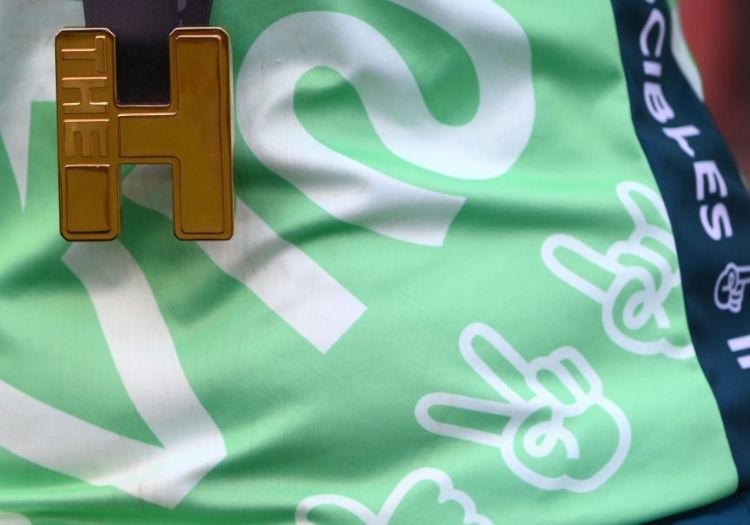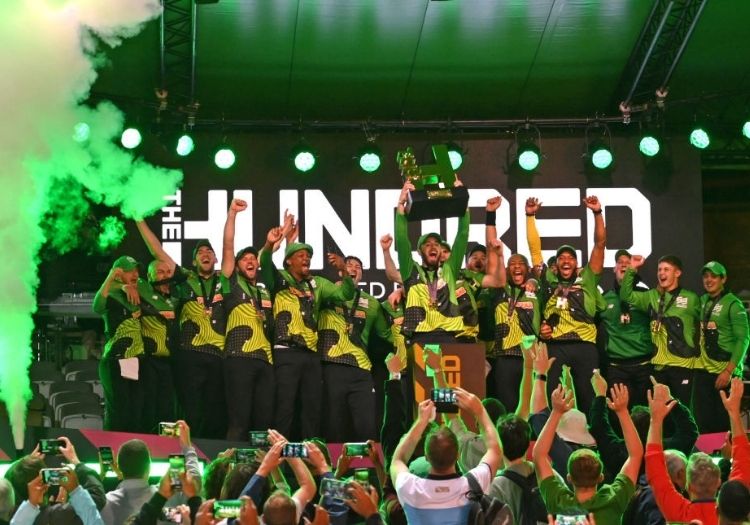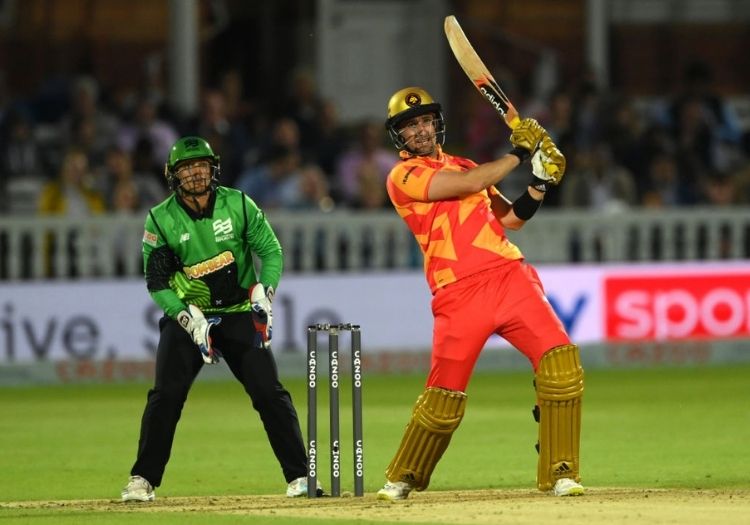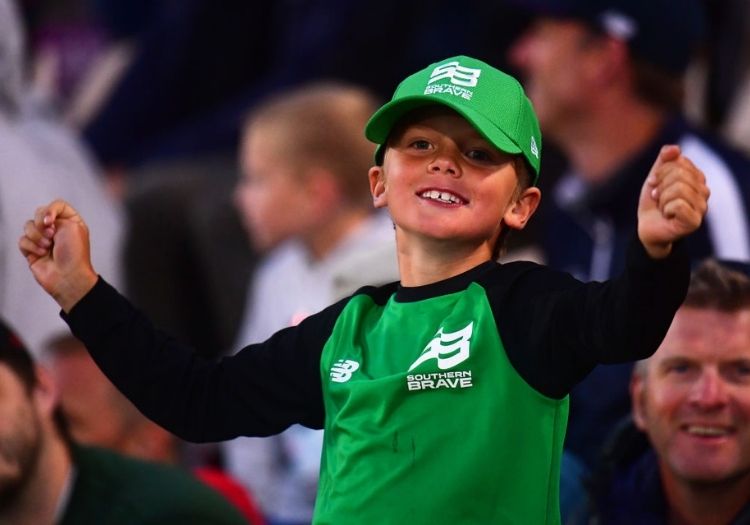ELIZABETH BOTCHERBY, JAMES COYNE, NICK HOWSON, SAM MORSHEAD, SHIVAM PATHAK and HUW TURBERVILL reveal their personal reflections on the first year of the controversial 100-ball competition


The Hundred has taken me on something of an emotional rollercoaster. Ahead of the tournament opener, I was broadly in favour of its addition to the cricketing calendar and impatient to see if it could live up to the hype, particularly the much-trumpeted benefits for the women’s game.
Covering my first match – Manchester Originals versus Birmingham Phoenix – five days into the tournament, that optimism was replaced with deflation, the flat atmosphere during the first 120 or so balls of the women’s game leaving me cold.
However, a trip across the Pennines a week later reaffirmed my faith in the tournament - the crowd at Headingley was simply electric - and by the time my older brother and I had spent a blissful summer afternoon in Old Trafford’s party stand for the Originals' final home game, I was making a mental note to return as a fan next year.
One moment, in particular, stood out for me on that afternoon – a small child seated nearby who kept us, complete strangers, entertained throughout both matches with a steady stream of questions and quips, a non-fan undertaking a live-action lesson in cricket 101 just as the ECB had hoped for.
In amongst all of the discussions assessing the success of The Hundred – exposure and increased profile for women’s cricket, similarities to the T20 Blast, its impact on county cricket, alcohol-fuelled fans jeopardising the family atmosphere, and more – the defining image for me will always be that one young fan slowly but surely falling in love with cricket over the course of 400 balls.
The big question now, and my main area of concern, is what will the ECB, and the 26 domestic clubs, do to keep the newest members of the cricket fraternity engaged? The answer to that will be crucial in determining the legacy of The Hundred in years to come.
Due to a combination of magazine deadlines, holidays and childcare responsibilities, my experience of The Hundred has been entirely through a screen. I suspect I am one of the few people who watched the opening games live on YouTube from my mother-in-law’s flat in Latvia.
Like many I’ve found the collusion between board and broadcasters to hype up everything – not something invented by The Hundred, we should acknowledge – pretty grating. I’ve tried to enjoy the cricket on its own terms.
And I’m afraid I do not buy the argument that an 18-team county tournament – where most matches in an evening would have gone uncaptured on TV – could have drawn in as many eyeballs or produced the same quality of cricket. Like it or not, Liam Livingstone’s 10 sixes would not have been live on BBC Two were this a souped-up T20 Blast. Besides, there could never have been a symmetrical women’s competition with that model. This is why I have always (tentatively) backed a new competition, though not quite in this form.
There’s no way it could have been done without some angst, though Twitter appears to have ramped it up. The question is to what degree you should be undermining the game’s existing formats to do all this (and let’s be honest, we are basically talking about the men’s game). No matter what the zealots on each side say, it’s all a balancing act.
I realise this is a value judgement, but to me there is little point in creating a load of new cricket fans if you are simultaneously damaging the best (and still most lucrative) form of the game in this country. Two years after Ashley Giles promised to “redress the balance” back towards Test cricket, it’s been hard to see much evidence of any action.
It’s a bit like the International Chess Federation throwing all its resources behind draughts because chess is a bit long-winded and hard to grasp at first. Not just a mistake, but a form of cultural vandalism.

Southern Brave won the men's competition
In stands, press boxes, on the streets of host cities, on Zoom press conferences with players, coaches and administrators and on my sofa with my wife who has a phobia about cricket, I've tried to digest The Hundred in as many ways as possible.
I'm of the view that year one can both be considered a success but spark questions over what the future looks like.
Having the women's game as a proper part of the tapestry of the calendar is a real thrill. I have often felt like we as a fraternity tip-toe around it, not certain about where it sits or how to treat it.
Being front and centre does at least allow us to have some frank conversations and reach some honest conclusions.
There is now no justifiable reason for any kind of seismic pay gap between both genders in the same competition. The ECB should be protecting and rewarding all players in the same way.
I firmly believe the women's competition holds the key to the direction of the entire concept. Do the ECB continue to pursue it, knowing what damage it might do to the men's structures. Or do both competitions go their separate ways?
What is undeniable, is of the two genders it is the women's game that has made the sacrifices in years gone by. Perhaps it is the turn of the men to do the heavy lifting.
There are definitely areas of development. There is a disconnect between the musical entertainment and the event, explaining technical aspects of the games that need improvement and broadcasters must find that balance between propaganda and scrutinising.
Of all the concerns, drunken anti-social behaviour threatens to impact on one of the tournament's big USPs and must be addressed.
I am all for tradition, protecting long-form cricket and delivering an England team that performs well. But we need to accept that there is a new kid in town, one which attracts audiences some of the other formats can only dream of.
I don't turn up to Glastonbury Festival every year asking why The Rolling Stones aren't always playing. County fans would do well to concede that the sport is at least in transition, but that it can be for everyone.

Liam Livingstone graced free-to-air TV
Primarily I have experienced The Hundred through two prisms: that of the editor of a cricket news website, and that of a father to a little boy.
The lessons I have learned in both these guises are the same.
The women’s competition has generated extraordinary interest, advancing it as a spectator sport more than any other innovation I can pin down, and the men’s competition risks dragging the game in this country into a spewing, frothy-faced mess if a little objectivity cannot be achieved on all sides.
I went to the first match in the stands and took my one-year-old son to the rained-off debacle at The Oval a few weeks later; I’ve watched the vast majority of the broadcasting around the tournament and analysed The Cricketer’s website traffic generated by it obsessively.
There is zero doubt in my mind that The Women’s Hundred has been a success on every metric - and by metrics, I mean exposure, performance, engagement, attendance, visibility, and search trends.
For the men, the story is different. The tournament has not been as high quality as it might have been in an era outside Covid. It has still been generally of a higher standard than the Blast, but that is a fairly simple product of condensing the best 100 domestic white-ball players from 18 teams down to eight.
The atmosphere around men’s matches has been very similar to Blast nights out in the cities: colourful, loud (often aggressively so), energetic and boozy.
There is nothing wrong with that - it is what the ECB has actively encouraged for so many years - but it is a reason why I would not contemplate taking my little man to the second half of a double-header for a few years yet.
In the years leading up to the first ball of The Hundred, I joked about the idea of a mysterious new audience being generated by the competition.
As the tournament ends, I am very comfortable in saying that, yes, it does exist. And, yes, the ECB has been successful in capturing it - with The Women’s Hundred.
Now it’s down to all of us to figure out how to carry that audience forward, without leaving everyone else behind. And yes, that means compromise.

Michael Vaughan and Phil Tufnell led the BBC coverage
Despite the fact that my age ends with “‘teen”, I wouldn’t have called myself part of the Hundred’s target audience - chiefly due to my pre-existing interest in the sport.
Regardless, I wanted to take it in my stride and try to embrace it. I didn’t ground-trot for it, admittedly: I enjoyed The Hundred from the stands at Lord’s and in my own home, both as a fan and with a neutral eye.
Lord’s was a melting pot of ‘lads’ and families. I was lucky enough to be there for the matches between London Spirit and Southern Brave: the women’s game had some 15,000 fans watching on, as the record for the most-attended women’s domestic game was broken a few times throughout the tournament: opening a window that I hope the ECB will capitalise on.
The audible cheers and gasps as WinViz came on the screen towards the end of the game were my favourite. I understand what 11 off five with four wickets in hand means, while the new fans didn’t - and I was fascinated by the live reactions as the London Spirit crowd realised a minute after a wicket ball that it was bad news for their side.
With more glamour, colourful graphics (albeit presented somewhat confusingly), live music and presenters, I’d like to think that the first showing of the ECB’s focus group and brainstorming session was an overall success. Gimmicks a-plenty, indeed, and creases to be ironed out - but with the women’s game brought to the fore and new supporters inducted, we might just have a workable project.

Oval Invincibles prevailed in the women's competition
Looking at the competition from a work/social media perspective, we were unsure what to expect in terms of audience engagement. However, the tournament hasn’t differed wildly to what we see with other formats.
It’s a fairly straightforward formula; cricket fan sees a clip of decent cricket = engagement. If accounts share clips of average cricket masquerading as the best the game has to offer, people are wise to it.
It’s a balance commentators have also had to contend with. There’s a line between enthusing and educating, and patronising. The cricket must speak for itself. You shouldn’t need to exaggerate.
Don’t over enthusiastically greet a regulation catch as anything other than that. Don’t holler over every six as if it’s the first in the game’s history. I understand the need to bring enthusiasm and energy to a broadcast, of course, but there is a middle ground and that verve should be genuine.
Please avoid saying things like “Lord’s has never seen entertainment like this”. That, obviously, is a nonsense statement.
Let’s measure The Hundred’s success on viewing figures, participation numbers, and how it benefits the sport as a whole over the coming years, not how loud a commentator’s voice can get.
As for the comment section, a few voices who staunchly oppose The Hundred remain. We’ll get people tweeting “who cares?” (as they are well within in their right to). But those responses dissipated as the tournament progressed. I don’t doubt those people still harbour concerns but perhaps acceptance has taken over.
I’m not particularly interested in lawn bowls, but do I tweet BBC Sport telling them I don’t care about it? No. I’m not a huge fan of cress, but I don’t ask the checkout person in Sainsbury’s why they are selling it. Someone must be buying the stuff. I truly hope we can balance all formats so nobody’s personal pinnacle of the sport is kicked to the wayside.
Me Test, Finchy Test, Gareth Test, sometimes The Hundred so… different formats for different needs.

The ECB believe they found a new audience for cricket - but can they keep them coming back?
Like anybody with a healthy sense of curiosity, I watched the opening matches. My interest has certainly declined as it’s gone on, however, with the England v India Test series captivating me 100 times more (see what I did there?).
My loyalty is to the county game – although not necessarily to the counties, who have played their part in banishing red-ball cricket to the margins of the summer.
I acknowledge that the decent crowds have been similar to Blast derbies. And that there is interest among youngsters and casual fans – I’ve heard about youngsters snapping up tickets and demanding shirts. It hurts that a young lad wants a Trent Rockets shirt not Nottinghamshire’s, but the facts are the facts.
I acknowledge that the eight-team format concentrates talent in places – look at the pace attack of Southern Brave, and the spin of Trent Rockets.
Some of the commentating has been cringe-inducing. It’s difficult to improve on how Mike Atherton put it: “A gripe is that the early hard sell was jarring. There should be enough confidence in the game to allow the competition to sell itself and, crucially, for viewers to make up their own minds. If everything is wonderful then nothing is; if everything is the best ever, then nothing is. Viewers are not fools.”
I have enjoyed Chris Green’s insights on 5 Live Sports Extra, but I don’t like the garish graphics and my brain struggles to decode them after 40 years of the traditional way.
Seeing players like John Simpson (of Middlesex) play for Northern Superchargers also seems odd.
The women’s game has clearly enjoyed a boost. Some fans have arrived early ahead of the men’s game and enjoyed what they have seen. That’s great. I cannot agree that the men’s Hundred should be guaranteed a long-term future because of this, though.
I still think it should be T20 to make it compatible with the other global tournaments.
P.S… The helmets are too shiny.
Subscribe to The Cricketer for exclusive content every day: The inside track on England's Test tour with George Dobell in Pakistan, award-winning analysis, breaking news and interviews and the only place for in-depth county coverage all year round. Plus: An ad-free app experience at your fingertips. Subscribe to thecricketer.com today for just £1.